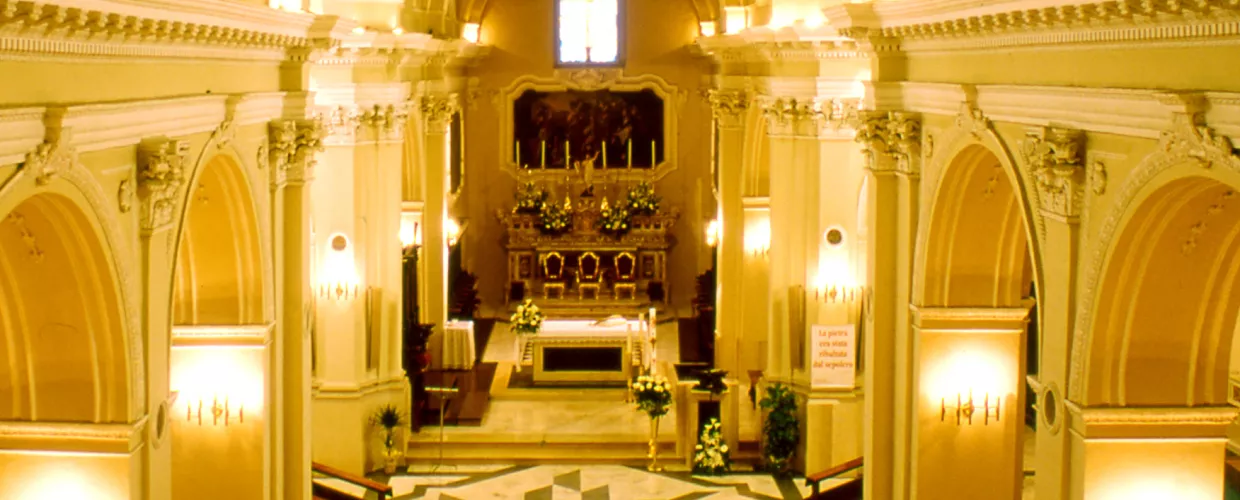This content was automatically translated. View the original text.


Overview
You'll find a more modern side of Trivento on the flat, thin strip running along the sides of the main road, ending at the top above the river Trigno with the hill, on which the historic centre is built in a fan shape around the Cathedral. Tradition has it that the church was founded in the early days of Christianity on the site of an ancient temple dedicated to Diana. More certainly 17th-century is the bell tower, and both a fourth- or fifth-century baptistery and the crypt dedicated to St. Castus are notable inside. The latter is divided by columns and pillars into seven small naves, beneath which are preserved wooden statues, tombstones, frescoes and a 12th century lunette with sculptural reliefs depicting the Trinity.
Also worth seeing in this almost small town are the 18th-century chapel and the bishops' hall with portraits of prelates in the Bishop's Palaceand the former 16th-century Church of the Holy Trinity set up as Diocesan Museum of Sacred Art: Here, liturgical vestments and sacred furnishings between the 16th and 19th centuries from the area are displayed, including a 17th-century reliquary with the Holy Thorn.
In historical terms, before becoming the Roman municipality of Terventum the place had been a stronghold repeatedly ravaged during the Samnite wars, only to rise to the rank of diocese in early Christian Italy in the fourth century. In terms of nature, however, Trivento is home to the Park of the Cenozoic Morge of Molisewhich unites a number of municipalities in Molise for the purpose of collective promotion.